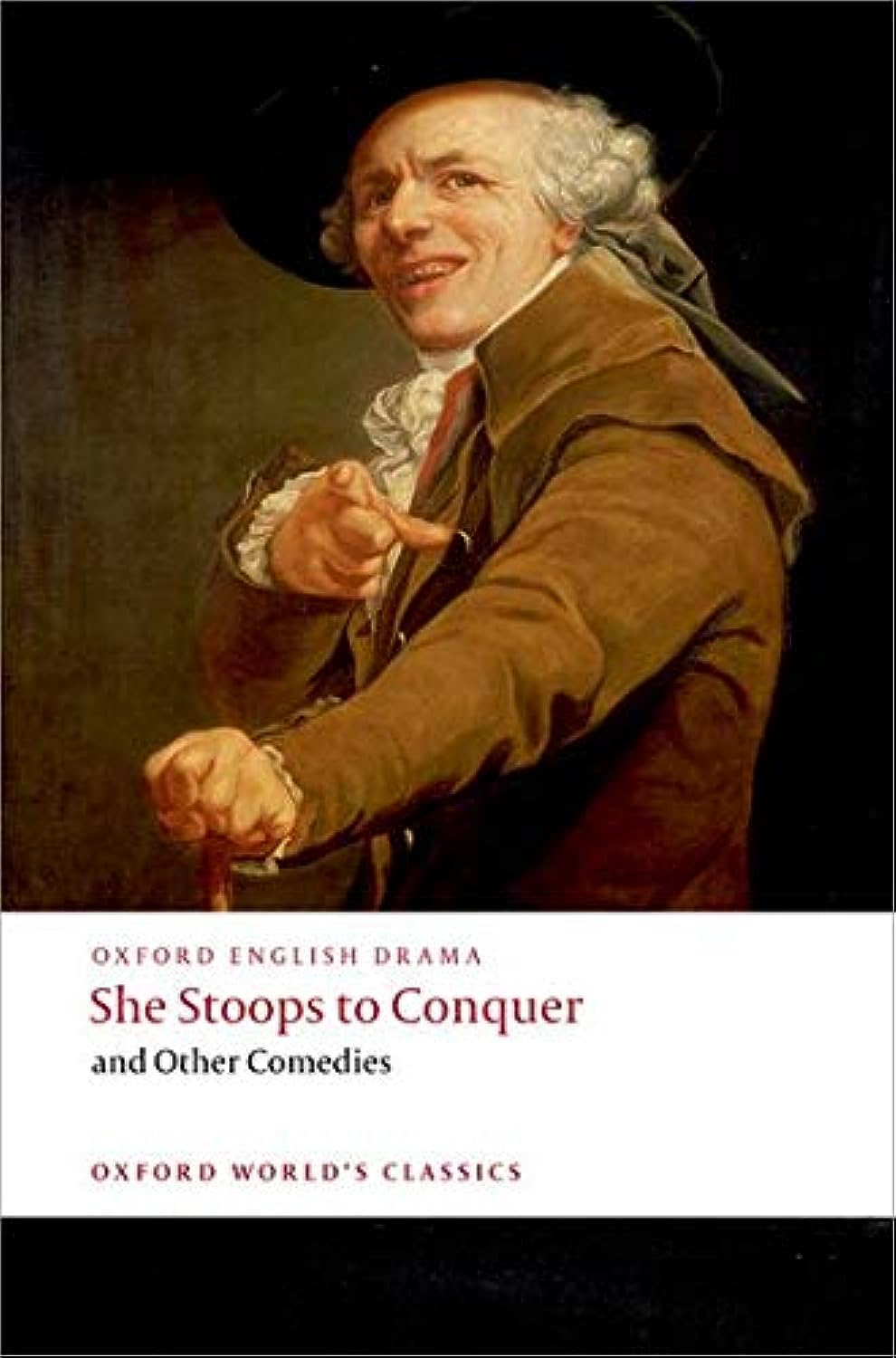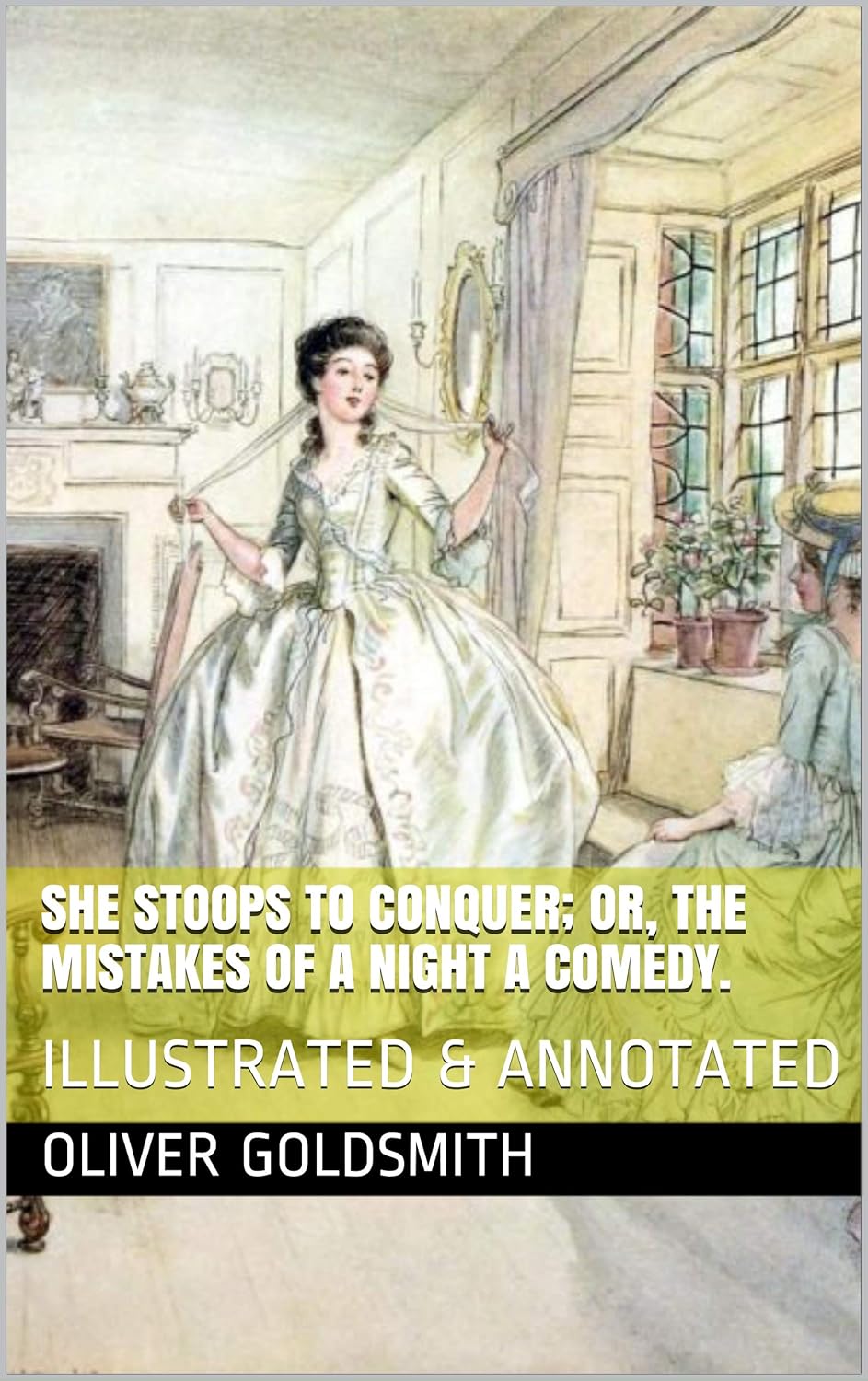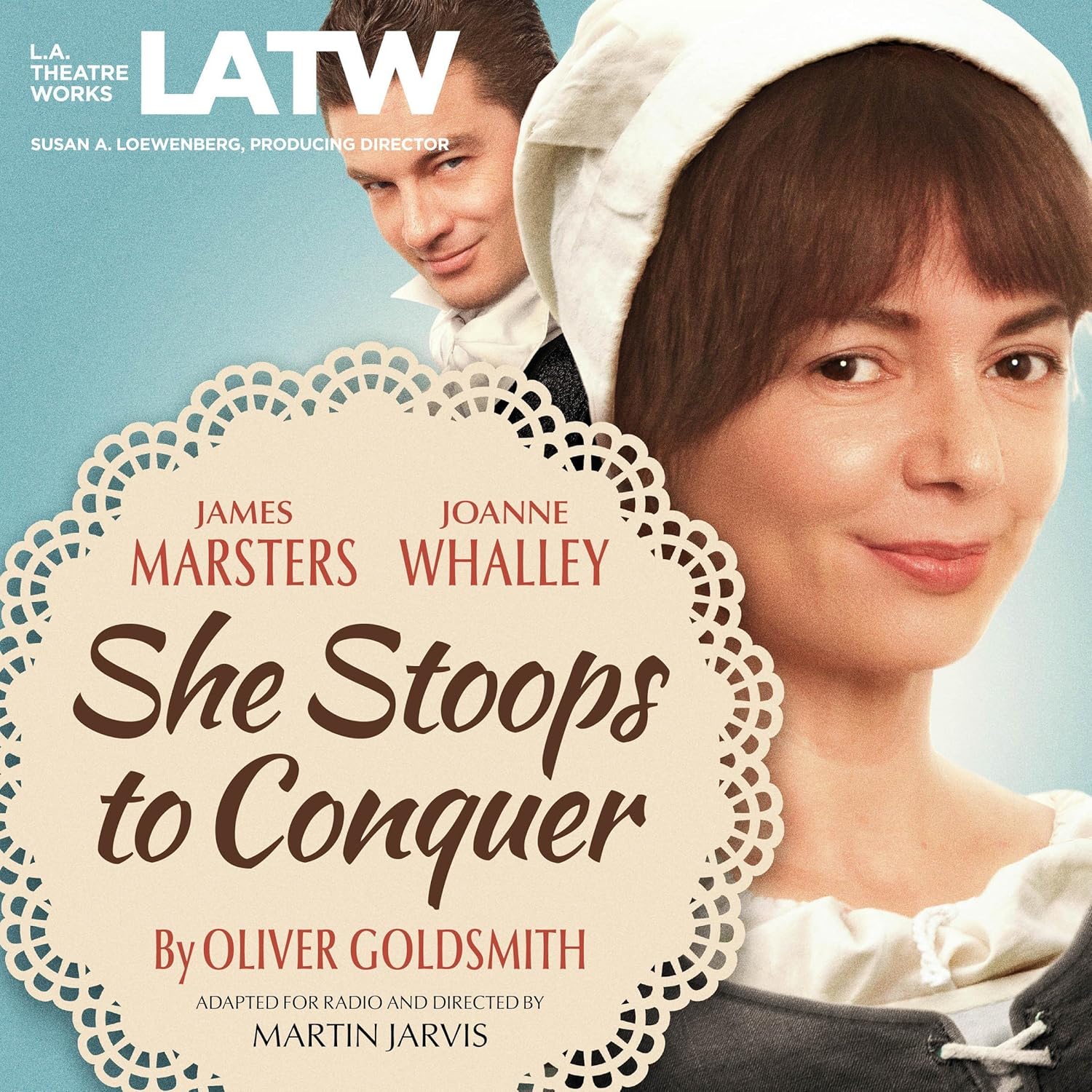A Comedy That Revolutionized English Theatre
The year is 1773. The London theater scene is dominated by sentimental comedies – moralistic plays that value tears over laughter. Then arrives Oliver Goldsmith’s “She Stoops to Conquer,” a boisterous comedy that dared to make its audience laugh out loud again. A play so revolutionary in its return to genuine humor that it not only saved its struggling theater from bankruptcy but helped reshape English comedy for generations to come.
Quick Facts
- First performed: March 15, 1773, at Covent Garden Theatre, London
- Original title: “She Stoops to Conquer, or the Mistakes of a Night”
- Runtime: Approximately 2 hours and 30 minutes
- Structure: Five acts
- Genre: Comedy of manners, Laughing comedy
- Notable revivals: National Theatre’s 2012 production starring Katherine Kelly
- Based on: Goldsmith’s own embarrassing youthful experience of mistaking a private home for an inn
Just want to read the play?

Oxford World’s Classics edition
Includes Fielding’s The Modern Husband, and Garrick and Colman’s The Clandestine Marriage.

Illustrated and annotated edition
Good for first-time readers. Balances poetic beauty and plot clarity.
Free version? Try the version on Project Gutenberg: https://www.gutenberg.org/files/383/383-h/383-h.htm
Historical Context
Written during a period when English theater was suffocating under the weight of sentimental comedy, “She Stoops to Conquer” arrived like a breath of fresh air. The 1770s were a time of rigid social hierarchies and strict codes of conduct, particularly regarding class and courtship. Goldsmith’s play deliberately poked fun at these conventions while simultaneously highlighting their absurdity.
The play’s premiere was itself a drama worthy of staging. The theater manager, Colman, had such little faith in the play that he repeatedly delayed its production. It took the intervention of Samuel Johnson, the leading literary figure of the day, to force its staging. The result? An immediate triumph that has kept audiences laughing for nearly 250 years.
Plot Overview
Young Marlow, accompanied by his friend Hastings, travels to meet his potential bride, Kate Hardcastle. Through the mischief of Tony Lumpkin (Kate’s step-brother), Marlow is tricked into believing the Hardcastle’s country home is an inn. The confusion leads to Marlow treating the dignified Mr. Hardcastle as a presumptuous innkeeper while simultaneously becoming tongue-tied in front of Kate, whom he believes to be a genteel lady.
Kate, discovering Marlow’s curious trait of being confident with lower-class women but painfully shy with those of his own class, pretends to be a barmaid to win his affections. Meanwhile, Hastings and Constance Neville (Kate’s cousin) plot to elope, with Tony’s help, to prevent Constance’s jewels from falling into his mother’s hands.
Themes & Analysis
Class and Social Mobility
The play masterfully explores the fluidity of class distinctions. Kate’s ability to move between classes through her disguise reveals the performative nature of social status. Marlow’s contrasting behavior with different classes exposes the artificiality of social conventions.
Appearance vs. Reality
Every major character engages in some form of deception or experiences confusion about identity. The play suggests that authentic relationships can only develop when artificial social barriers are removed.
The Generation Gap
The conflict between Mr. Hardcastle’s traditional values and the younger generation’s modern attitudes reflects the changing social dynamics of 18th-century England. Tony Lumpkin’s character particularly embodies this generational rebellion.
Revolutionary Elements
Goldsmith’s play was revolutionary in several ways:
- It rejected the prevailing sentimental comedy style
- It combined high and low comedy
- It presented complex, flawed characters rather than moral archetypes
- It used mistaken identity not just for comedy but for social commentary
Cultural Impact
The play’s influence extends far beyond its time:
- It helped establish the comedy of manners as a major theatrical genre
- Its influence can be seen in works from Oscar Wilde to modern romantic comedies
- It remains one of the most performed 18th-century plays
- Its themes of social pretension and generational conflict remain remarkably relevant
Staging & Performance
Modern productions face several challenges:
- Balancing period authenticity with contemporary relevance
- Managing the play’s complex blocking and timing
- Conveying 18th-century social nuances to modern audiences
- Maintaining the fast pace necessary for successful farce
Reading Guide
Best Editions
- Brian Gibbons (New Mermaids) – excellent annotations
- James Ogden (Norton) – comprehensive historical context
- David Hornbrook (Cambridge) – perfect for students
Reading Tips
- Pay attention to the character’s varying speech patterns
- Note how language changes based on perceived class
- Watch for double entendres and period-specific jokes
- Consider how stage directions inform character relationships
Contemporary Relevance
The play’s themes resonate surprisingly well with modern audiences:
- Social media personas vs. authentic selves
- Class prejudices in dating and relationships
- Parent-child conflicts over tradition vs. modernity
- The role of deception in romantic relationships
Fun Facts & Trivia
- The play was almost rejected by the theater manager for being “too low”
- Goldsmith based Tony Lumpkin on himself as a young man
- The original production’s success saved Covent Garden Theatre from financial ruin
- The play has never been out of production since its premiere
Why This Play Endures
“She Stoops to Conquer” remains vital because it combines timeless humor with sharp social observation. Its exploration of class, identity, and romance speaks to every generation, while its witty dialogue and clever plot mechanics continue to delight audiences. The play proves that true comedy can both entertain and illuminate human nature.
Further Exploration
- Related plays: “The Rivals” by Sheridan, “The Beaux’ Stratagem” by Farquhar
- Film adaptations: 1914 silent film, 1923 British film, BBC Television productions
- Critical works: “Goldsmith: The Critical Heritage” edited by G.S. Rousseau
- Modern interpretations: National Theatre’s 2012 production set in the 1920s
Whether you’re a theater enthusiast or new to 18th-century comedy, “She Stoops to Conquer” offers a perfect blend of humor, social commentary, and romantic intrigue. It’s not just a historical artifact but a living piece of theater that continues to prove that sometimes the best way to find love is to stoop a little lower than your station.






Leave a Reply